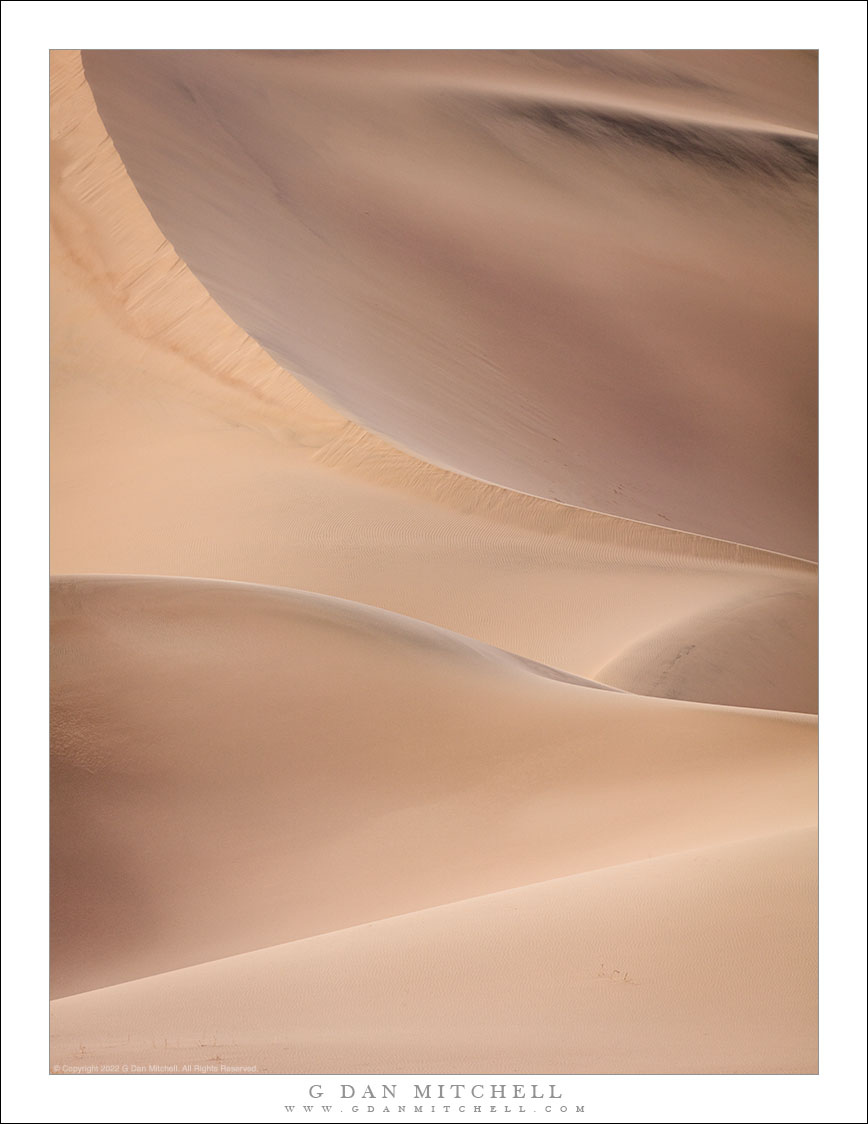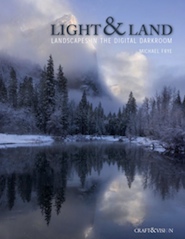
Dune Study, Evening. © Copyright 2022 G Dan Mitchell.
An interpretation of soft dune forms and colors in evening light, Death Valley National Park.
When photographing sand dunes I spend a lot of time looking for just the right combination of shading, texture, line, curve, and color. But in the end, it mostly comes down to the light — the light that colors the sand, creates the shading, and illuminates those lines and curves. It seems like every photograph in the sand dunes is an ephemeral, one-time thing, and the particular combinations of conditions can never be precisely replicated. Unlike subjects where the primary elements of the scene don’t change much, each visit to the dunes takes me to different places and photographs.
On a late-March trip to Death Valley National Park, I revisited a location that I had photographed with great success a couple of months ago. This time Patty accompanied me, and I wanted her to experience the light that I had worked with on the earlier visit. That did not happen. Two months ago the evening sky was clear, and warm-colored sunset light illuminated the western-facing dunes. This time the sky was filled with clouds and the light was soft and the colors far less intense, producing an entirely different and subtle experience.
G Dan Mitchell is a California photographer and visual opportunist. His book, “California’s Fall Color: A Photographer’s Guide to Autumn in the Sierra” is available from Heyday Books, Amazon, and directly from G Dan Mitchell.
Blog | About | Flickr | Facebook | Email
Links to Articles, Sales and Licensing, my Sierra Nevada Fall Color book, Contact Information.
Scroll down to leave a comment or question. (Click this post’s title first if you are viewing on the home page.)
All media © Copyright G Dan Mitchell and others as indicated. Any use requires advance permission from G Dan Mitchell.

